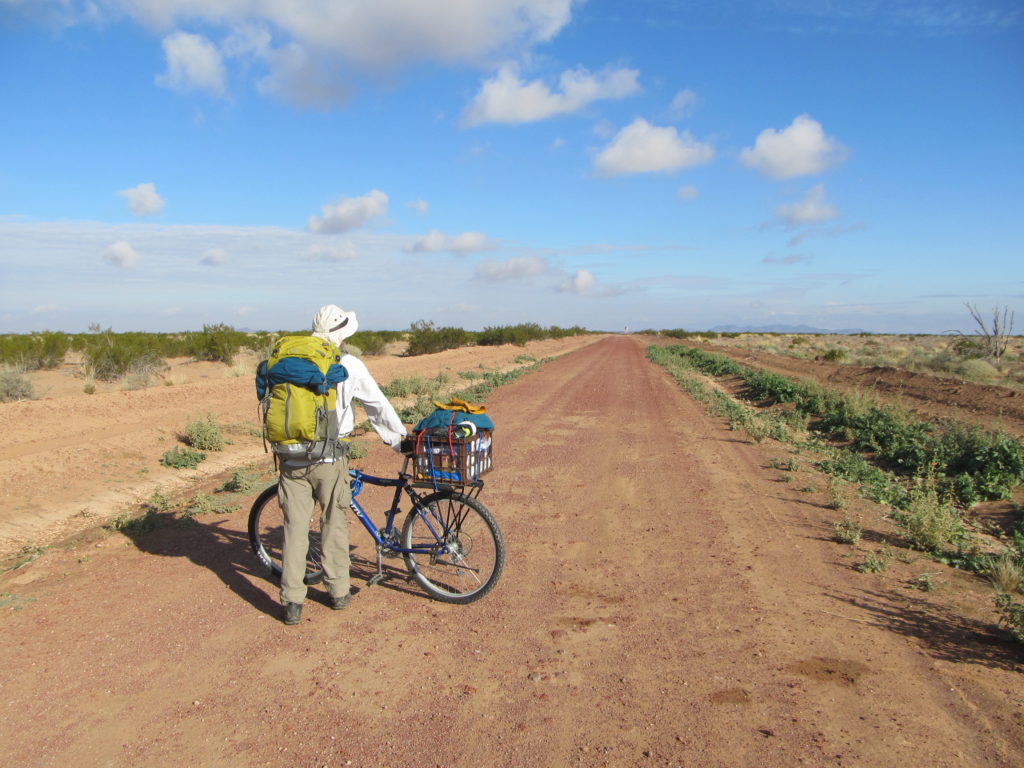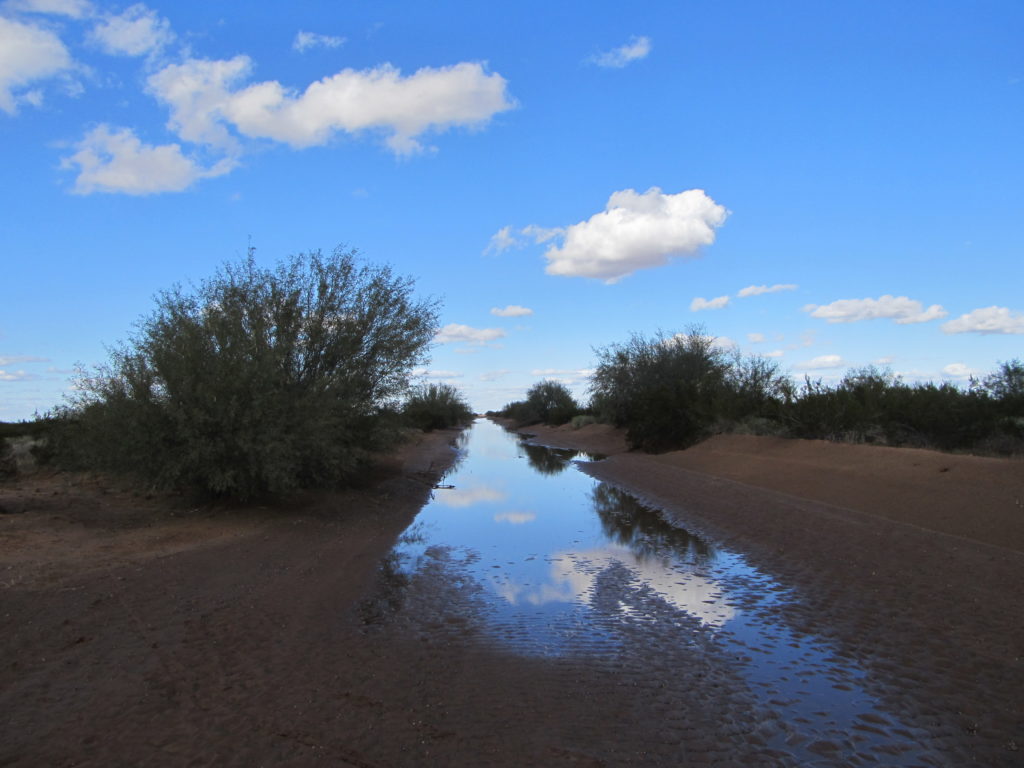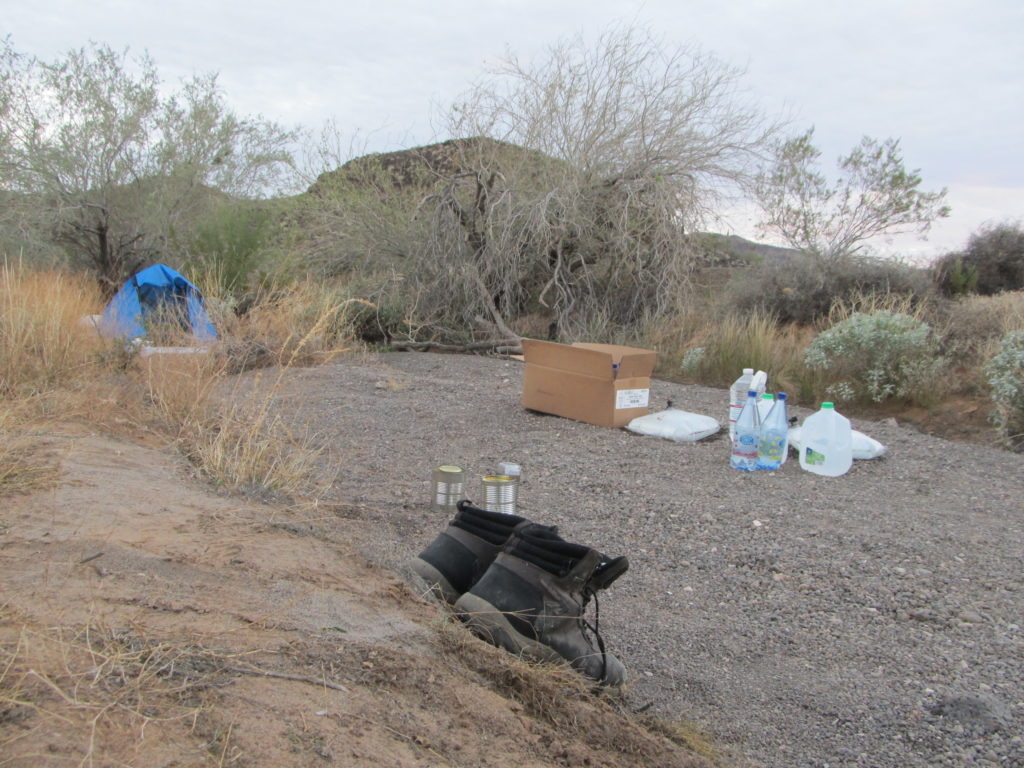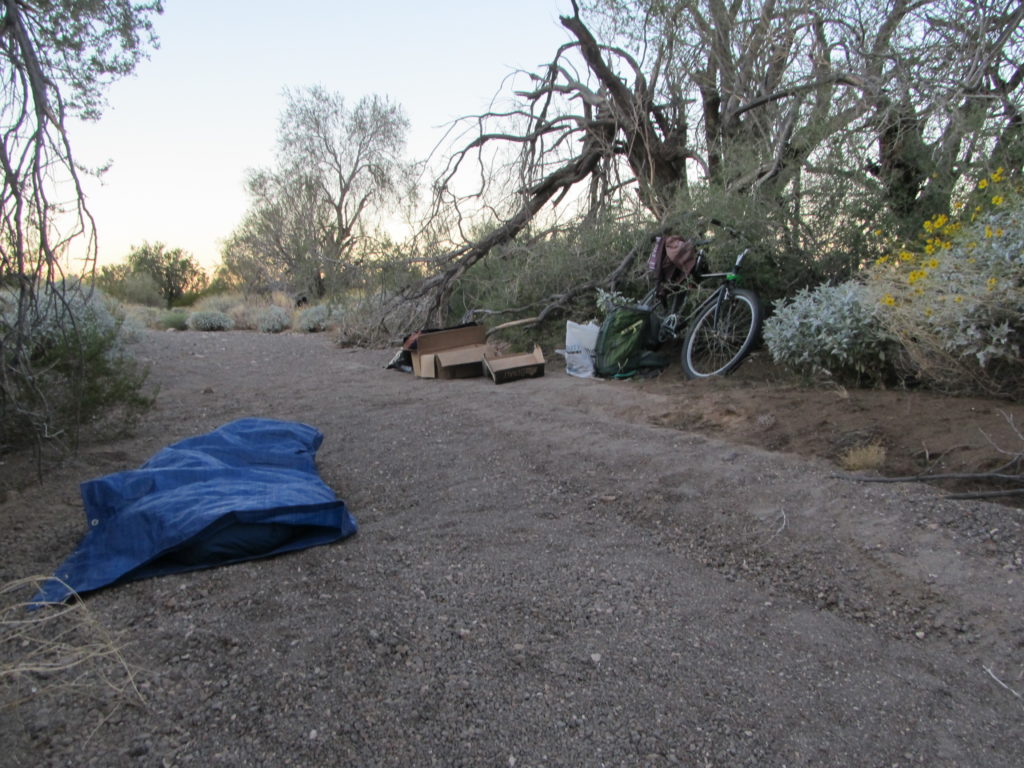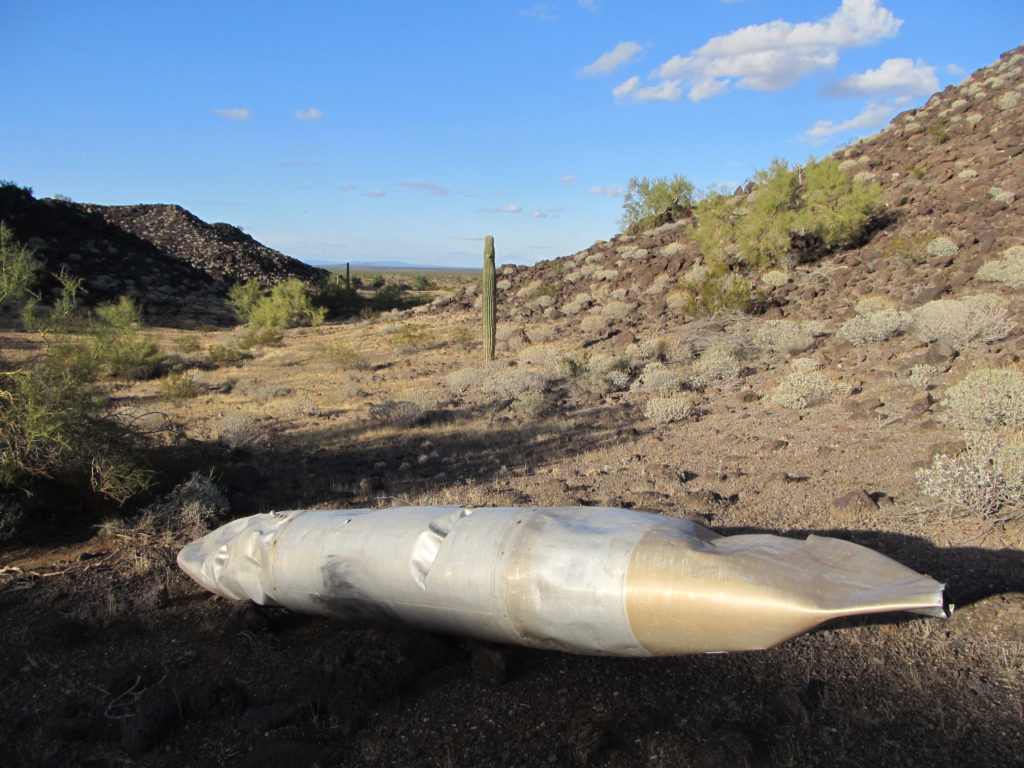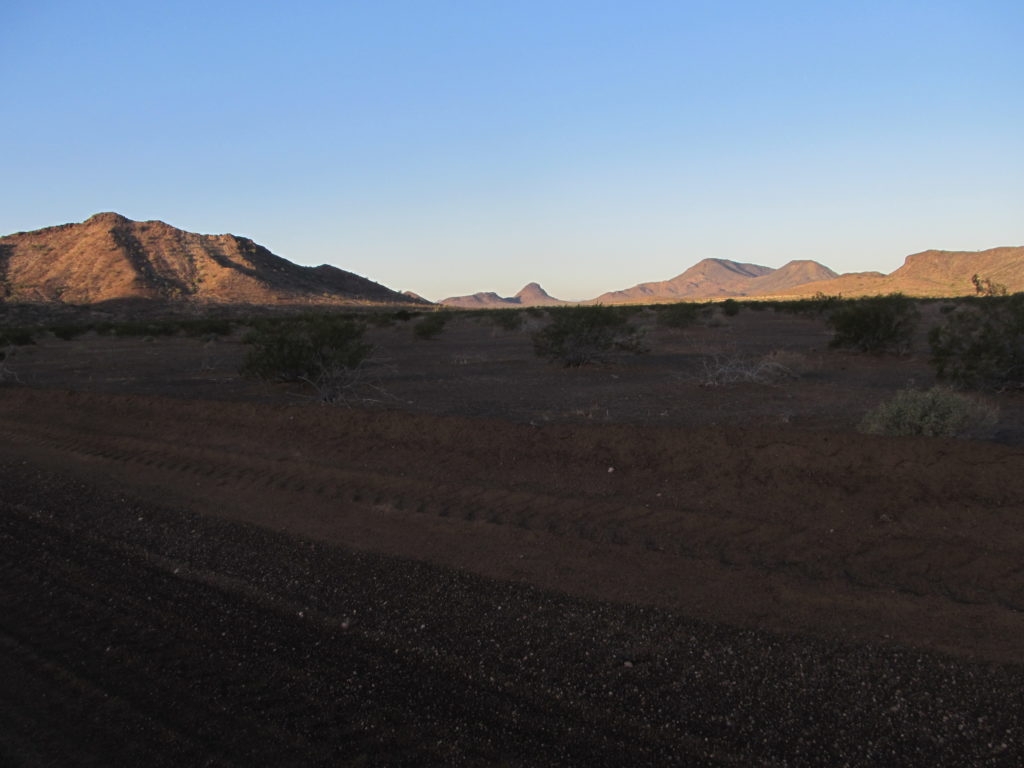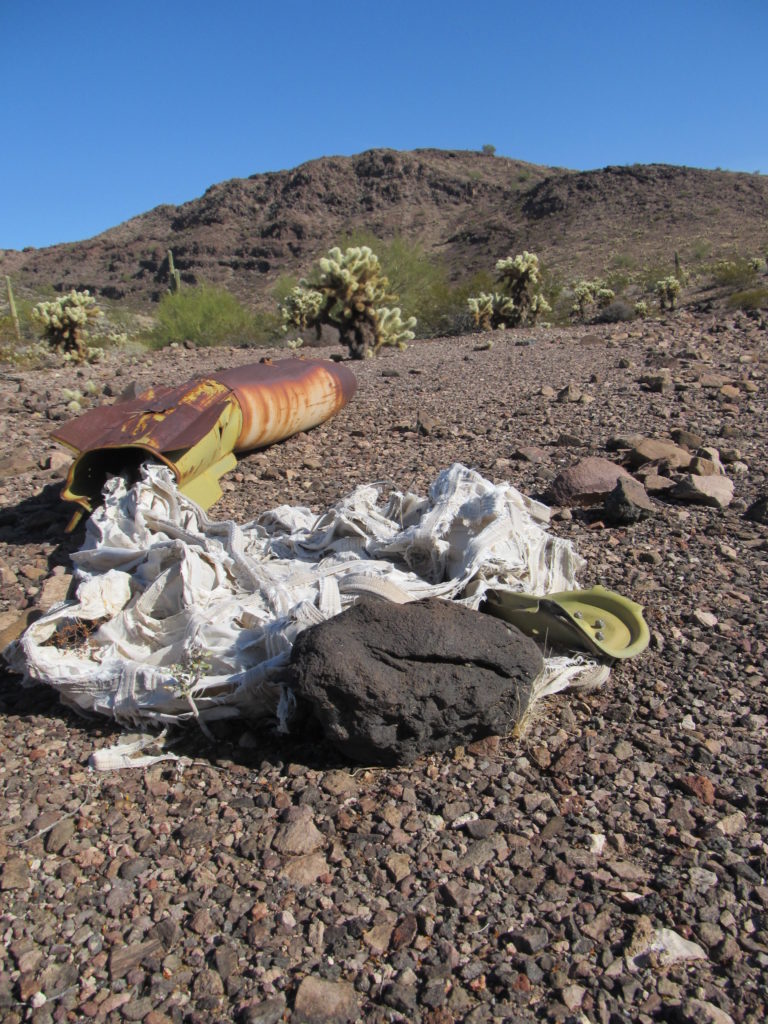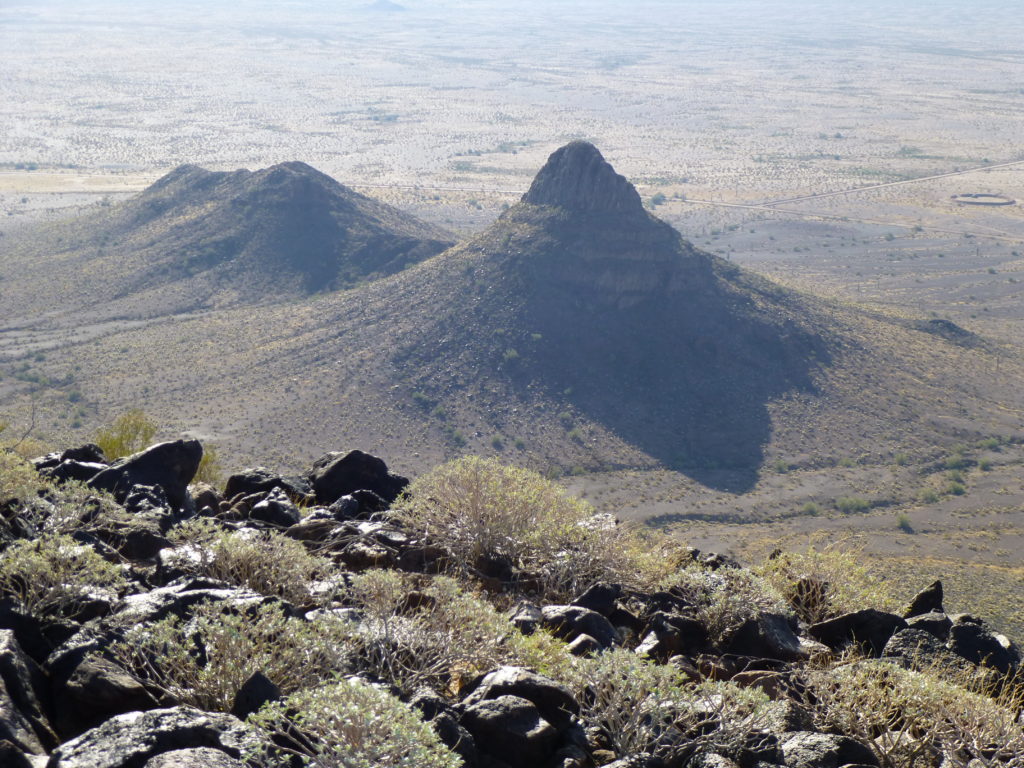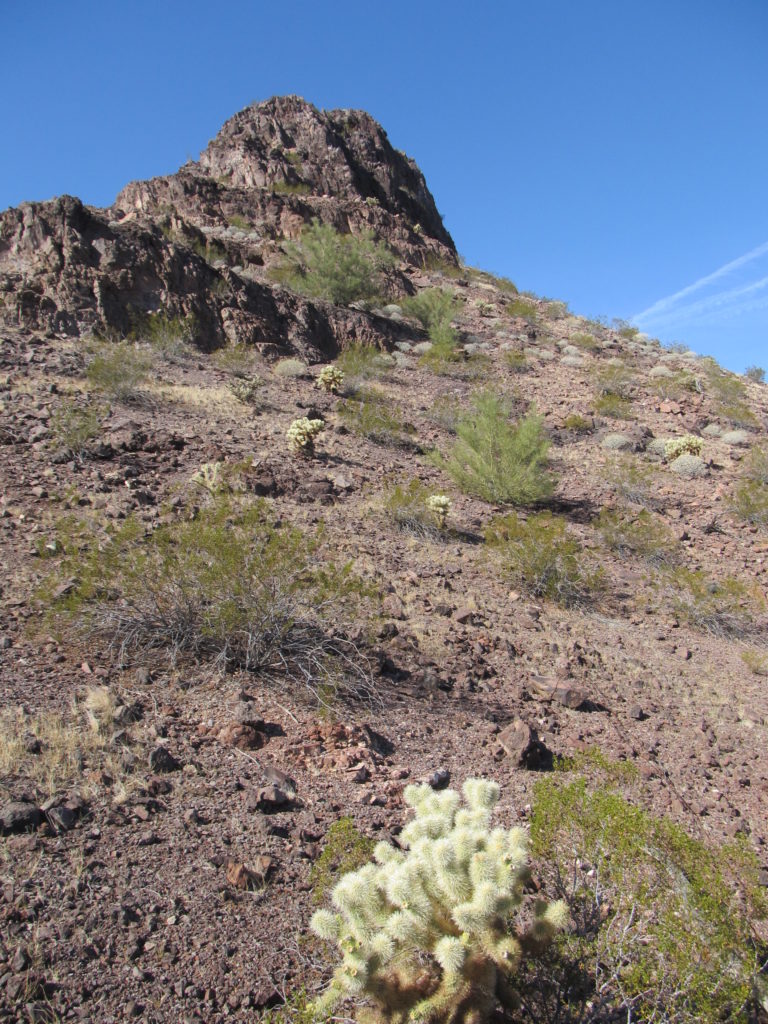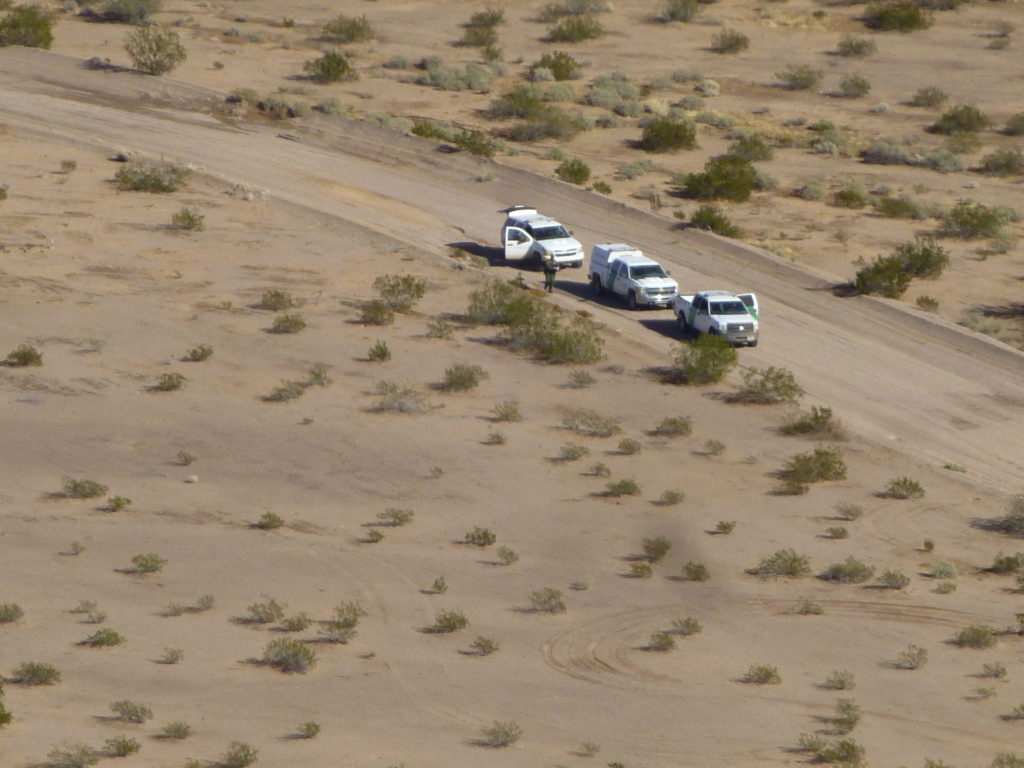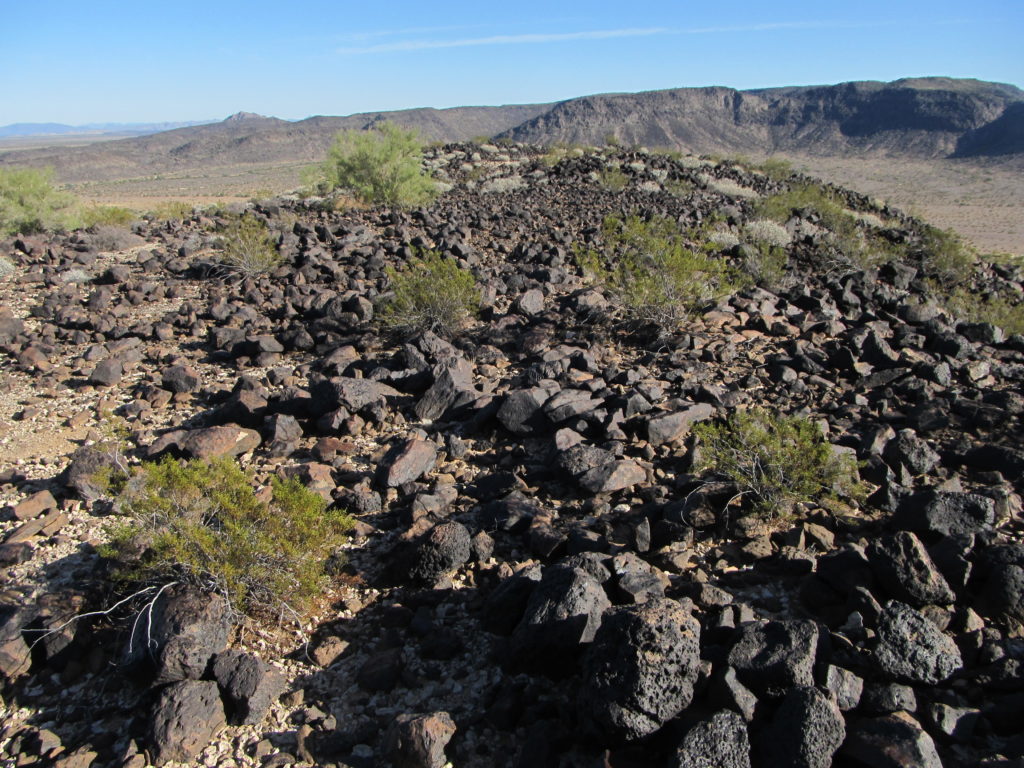What if you hatched an idea that was so bold, so outrageous that you couldn’t even take yourself seriously when pondering it? An idea that, the first many times you thought about it, you just outrightly dismissed it as being absurd and impossible. Well, the funny thing about ideas like that is that they don’t quite go away, as crazy as they might seem, especially if you like a challenge. They’re like earworms, they crawl inside your mind and you can’t shake them.
Six months ago, such an idea surfaced. I ran it past Luke, a friend and climbing partner with whom I’d previously done some outrageous stealth climbing, and he immediately labeled it as pretty crazy and probably un-doable. Actually, that’s what I hoped his reaction would be, and it didn’t take long before we started to think more about it and give it even the tiniest bit of credibility. I mean, how can you go into an area to climb a bunch of peaks when there’s not a drop of water there and it’s so far to get in there that you couldn’t possibly carry enough water to make it worthwhile? How is it possible to make plans for such an impossibility?
Well, we had tackled such challenges before, and thought that we might be able to pull it off, but it would be terribly difficult. Once the seed had been planted, we started a flurry of emails (eventually over 400 of them), phone calls and personal meetings to firm up details. There were a myriad of problems to overcome, and we whittled away at the list, one by one. So many things to consider, so many reasons not to go through with the plan – why, it made it all the more attractive! As the months passed, things began to gel – there seemed to be a path to success, however slim. We began to feel optimistic.
About 6 weeks before our starting date, I gave a box of food and fuel to Luke when we met to do another climb. He kept it at his home, waiting for the big day. Since we’d decided to do a clandestine run of all of our water in to a base camp location, it also made sense to bring in food and fuel at the same time. Water is the big item we needed out there, 4-5 quarts per day, each, for drinking and cooking. Luke had the herculean task of preparing about 20 gallons of water for transport in his truck, as well as our food and fuel for a week. It had to be hidden from any humans, legal or illegal, and safe from a wide variety of desert animals – in short, it all had to still be there, intact, when we went in to that camp a day later.
It’s amazing how tiny some of the details were to which we had to attend. As climbers know, at least those who’ve planned for a big trip in a remote area, you can’t leave anything to chance. How much toilet paper to bring; what must go into your first aid kit; did you tighten the tiny screws in your glasses; could you repair your pack if it broke; what would you do if you broke a bone; what would you do if your stove broke, and what if your fuel was defective or you ran out; do you have every map you need (are you sure?). Since this would be an outrageous stealth, it would be problematic to call for help in an emergency, as it would no doubt lead to arrest and prosecution. How do you weigh the two, where do you draw the line?
The time for departure arrived. Luke drove from his home, climbing a few peaks en route, and positioned himself for the deployment of our stuff. Timing was everything. We’d planned this for six months, and it had to go without a hitch. Early one morning, he drove in where no one is allowed to drive, ever, and reached the campsite. We’d studied the spot for so long on satellite photos, we felt like we knew it intimately. The weather was threatening as he buried some water jugs in a sandy wash, hid others in rock outcrops and covered others with brush. The same with our food and fuel – it was all wrapped in those big, black trash bags you use for lawn and garden clippings, and well-hidden. As prepared as he was, it still took an hour and a half to hide it all safely.
He started his run back out, and before he was halfway, the heavens opened. He fought a desert rainstorm of biblical proportions, with visibility at times reduced to near-zero. The dirt road he was on. although flat, became nearly impassable. At times, he feared getting stuck – how embarrassing would that be, if he had to be rescued in a place that was the biggest trespass of all time? He was nothing if not persistent, and after a while he made it out to easier ground and parked for the night, as the storm passed. He was able to phone me and say that the drop had been successfully done – now, all that was needed was for us to use our own muscles to get back in there and climb for a week.
The following morning, we met in a remote location, far from prying eyes. Even though all the weight of water, food and fuel was no longer an issue, we still had full packs on our backs with sleeping gear, clothes and everything else needed for a week in the wilderness. Also, since we were going to use mountain bikes as our primary means of transportation on this trip, we had the luxury of letting the bikes carry a lot of weight. As hokey as this seemed and looked, we felt it could make our lives a lot easier for the week, and it turned out to be a very practical idea.
It was a beautiful day, cool and sunny, and we started out in high spirits. The old road we biked on was flat and smooth, and we were able to make good time, about 8 miles per hour for the first hour or so, then dropping to 7 mph. After 2 hours, we had covered almost 14 miles (including several stops). Many ominous warning signs were passed along the way, which only served to brighten our day. After another several miles, we came to a huge pond covering the road, a result of yesterday’s storm.
All the run-off had pooled here, and we had no choice but to leave the road and ride on the desert floor. It was still damp from the rain, and our bike tires sank in, making pedaling very difficult, so much so that at times we had no choice but to get off and walk the bikes. Fortunately we were able to regain the road in half a mile or so. It took us 5 hours to travel the 22 miles to our camp.
Luke had picked a beautiful spot for our week’s adventure. It was in a wash, mostly sandy and flat, and it sat 5 to 6 feet below the level of the surrounding desert, making it well-hidden from prying eyes. It was in a quiet valley, enclosed on 3 sides by low ridges, and seemed to have been seldom visited. Sure, there were chunks of debris from past military activity, but that was to be expected.
Nearby, we found a few black Mexican water jugs and an old woolen blanket, but that was of no concern to us. Since there was no water to be found in this range, it seemed unlikely to be much of a conduit for Bad Guys, and that proved to be the case as the week went by. Here’s a piece of military debris we found close to our camp.
Luke showed me all the spots he had hidden our stuff, and we moved several gallons of water to a handy central spot. After cooking a meal, darkness fell not much after 6:00 PM. The desert is filled with dead wood, and this spot was no exception – there was enough for months’ worth of campfires close at hand. There’s something so primal and basic about a fire – it warms, it cheers, it reassures. Our ride in today had been nerve-wracking, always looking over our shoulders for the authorities, and that would become our habit for the next days – always vigilant.
By morning, there was a heavy dew on the tent fly, and a lot of condensation inside the tent from my breathing. Luke chose to sleep on the sand, with a tarp wrapped around his sleeping bag. Since the weather was promising, we laid things out to dry in the sun while we’d be out for the day. If anyone were to come by while we were out climbing, there wasn’t much we could do about it, short of dismantling camp and hiding everything – doable but time-consuming – so we simply trusted that nobody would find our spot.
Luke elected to wear his large pack while riding; I chose to put a small pack and whatever else I needed for the day in my basket. By the time we were all set to go, it was 7:40 AM. It was a quick ride out of our valley to a road which would take us to our first peaks of the day. Things started off well-enough, the riding was good, but soon worsened. A layer of loose gravel covered the road, several inches deep in places, and the bike tires simply sank in, grinding us to a halt. What a disappointment, we were really counting on some quick cycling through this area! No choice but to get off the road and try riding across the desert, but that surface was too soft to allow much progress and we soon found ourselves walking. This was our first bit of unfriendly biking, which we nicknamed “quad-buster” terrain, and how appropriate the name was.
Within a quarter of a mile, we made our way back to the road and toughed it out for a while, then turned off on to a smaller road, rough and rarely-used, which we used to get us closer to our first peaks. Soon we left even that, then biked cross-country for a while through a bunch of lumpy desert until we reached a huge wash. We knew we’d have to stop there, as it was so heavily-vegetated there was no way we could even walk the bikes through. We hid the bikes in a secluded spot, locking them together so nobody could take them – you’d need bolt cutters or a hacksaw to get them apart, and out here nobody is walking around with such tools. Whenever we leave bikes or anything important out in the mountains, we always take a GPS reading of the spot so we can find it again (the GPS will get you back to within 10 or 15 feet).
Away we went across some flat desert, then started up a rough, loose slope on our first peak. There were chunks of metal debris everywhere, including a few 500-pound bombs, many spent shells and twisted pieces of military junk that were unrecognizable to us.
It took us an hour to reach the top, where a set of solar panels powering some military antennae greeted us.
In the distance we could see a lot of man-made military targets, all accessed by a network of roads. Nothing was moving, all appeared quiet. There was no reason to hang around the summit, so after leaving a register we dropped down a steep slope, different than the one we’d climbed. Here’s a view of the next peak we wanted.
Soon reaching a saddle with our next peak, we side-hilled across the lower slopes. While doing that, we noticed some movement. What appeared to be 3 Border Patrol vehicles were moving south at high speed across the desert on one of the military roads. As we watched them recede in the distance, something of greater concern grabbed our attention. Two unmarked white pickups were moving along a road less than 200 vertical feet below us and a mere quarter-mile from our position. We felt very conspicuous out on the open slope, and plastered ourselves against the open slope, praying they wouldn’t see us. After a few tense moments, they passed from sight. Hmmm, we weren’t expecting any activity out here – what was going on?
Now that they were gone, we cautiously continued up the slope. This peak was very steep and guarded by cliffs on all sides, so we were looking for a break in its defenses – that came on the southeast side, a nice, exposed Class 3 rib with big exposure. Luke had seen this peak before and warned me that it could cause problems. Well, suffice it to say we made it. In this next photo, our route is up the left skyline.
Good, so far we were 2 for 2. We didn’t stick around long, as the activity we’d seen down below was making us nervous. Back down we went, carefully. Staying away from the road was our main goal now, so we contoured around and through 2 saddles, then out into open country towards our bikes. We’d been gone about 2 1/2 hours.
Two more peaks were on our radar for today, mainly because they were on our way back to camp. A quad-busting ride cross-country took us right to the slope of number 3.
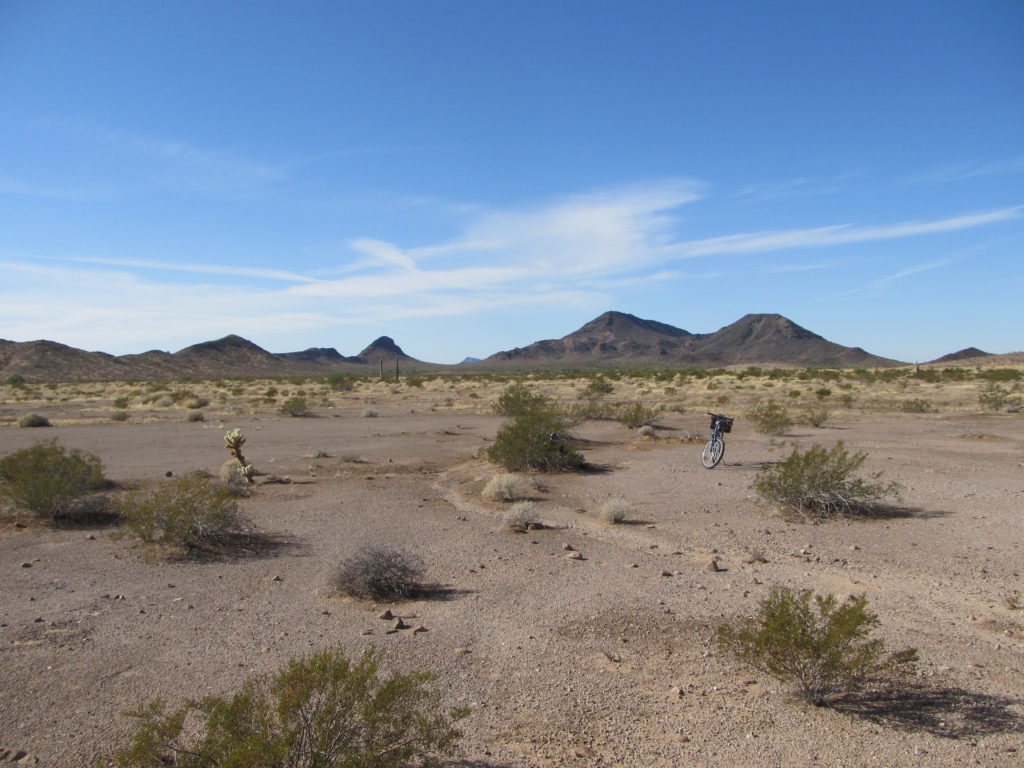
This is where we parked our bikes, out in the open. Our first 2 peaks are in the middle of the photo.
This one would turn out to be a piece of cake, and by 1:40 PM we sat on the summit soaking up the view. “What’s that?”, Luke asked, pointing off in the distance to the north, to a spot just around the corner from our hidden camp. A small white dot in the distance – was it a sign along the road? Wait, did it just move? Yes, I’m sure it did. It must be a vehicle. Hey, I think there’s more than one. Hmm, now it looks like 3. Do you see any markings on the vehicles? I think so – yes, green – yep, that’s Border Patrol all right.
So went our conversation on the mountaintop. It was like watching a movie from 400 feet up – we could see them driving a bit, then getting out and walking a bit, then driving off the road, then back to the road. It was obvious they had spotted our bicycle tracks and were following them. Do you think they’ll follow them all the way to our bikes? Yep, no doubt about it. We didn’t know it at the time, but as we were watching them from the mountain top, they were also watching us with binoculars. As we continued to watch, they continued along the roads we had traveled. They turned when we had. Would they see our bike tracks crossing the lesser road and heading over to the foot of our slope? Wait for it, wait for it ……… yes, right on cue, they turned off the road and followed our bike tracks across the desert right to where they were parked. The jig was up.
It seemed like the best thing to do was to go directly down to them and talk. I suggested to Luke that on the count of three, we shout out “hello” together. We did, and they certainly heard us. Down we went, with our hands in plain view so they could see them. They didn’t seem concerned as we approached them. When still a hundred feet away, we said we were American citizens and were mountain climbers. Thus began a pleasant conversation which went on for 20 minutes. They said that we shouldn’t worry, that they were fine with our being out there. They reiterated that they weren’t out there to enforce anybody else’s rules – not Organ Pipe, not the Cabeza Prieta, not the military. Their sole mission was to catch Bad Guys, and we obviously didn’t fit that definition. We told them we’d been watching them track us for a while, and said “You’re good!!” They liked that complement. Their supervisor said they were out on a training exercise, so tracking us was good practice for this group of new recruits. There were 11 agents in all, 4 of them women, and I’ll bet the oldest wasn’t half my age. They seemed to respect the fact that we’d been climbing in these wildest of desert places for 30 years. The whole encounter was a very Kumbaya experience. They wished us well, telling us to be careful and keep a sharp eye out – we, in turn, promised we’d note the location of and report back to them any sightings of Bad Guys. They piled back in to their vehicles and drove away.
Full of wonder, we hopped on our bikes and headed cross-country to our 4th peak, an easy climb, on top by 3:00 PM.
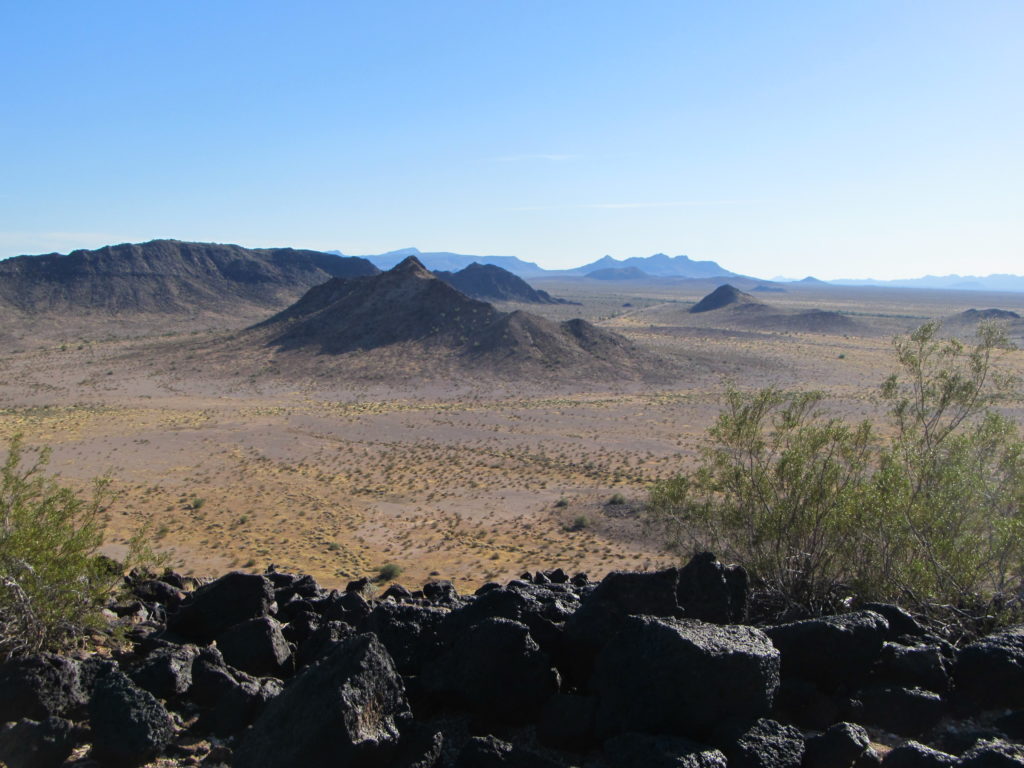
Looking out to our 3rd peak, in the middle across the flats – it was from it we saw the Border Patrol
All 4 of these peaks now held climbing registers. In this final photo, we are looking towards our camp, hidden behind a low ridge on the left in the distance.
Once we were back down to our bikes, it was a quad-busting pedal across the desert to the road and then a short ride back to camp by 4:00 PM. What a day – plenty of drama, and this was only our first! What would tomorrow bring? Certainly nothing could top today’s adventure.
Please stay tuned for the next chapter of this story, entitled “Crazy Stealth”.

